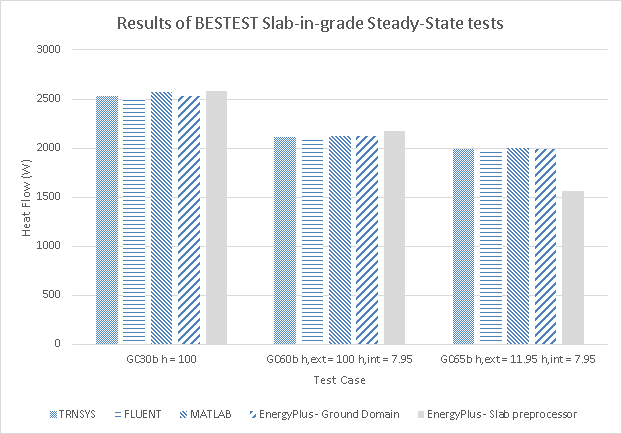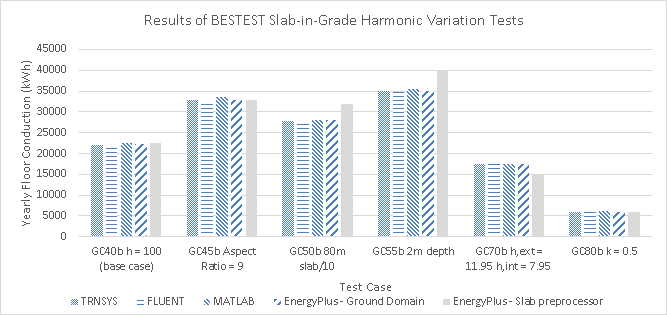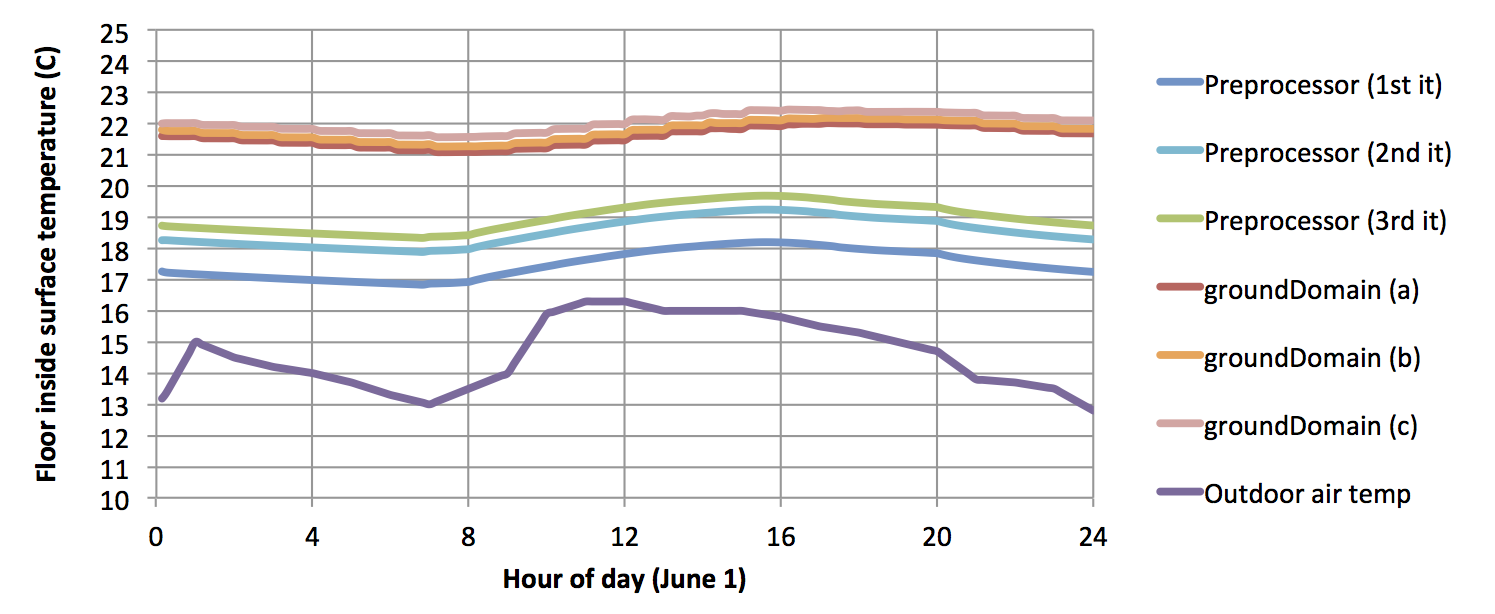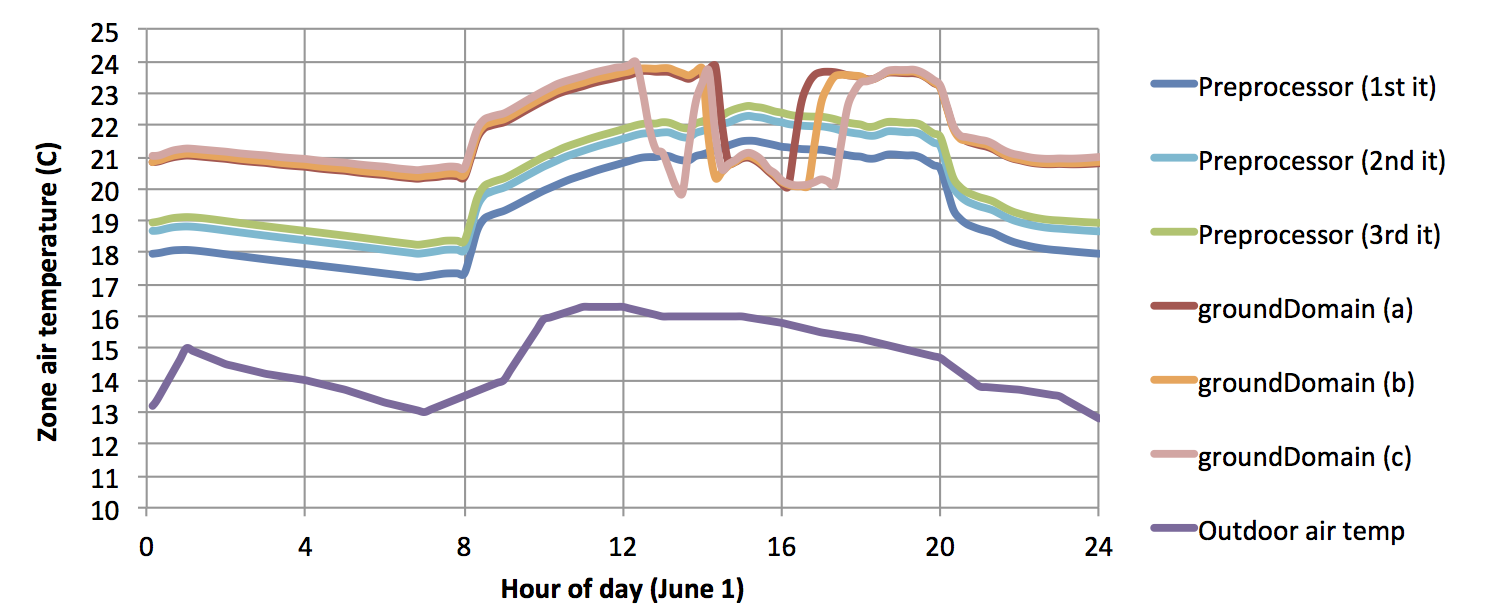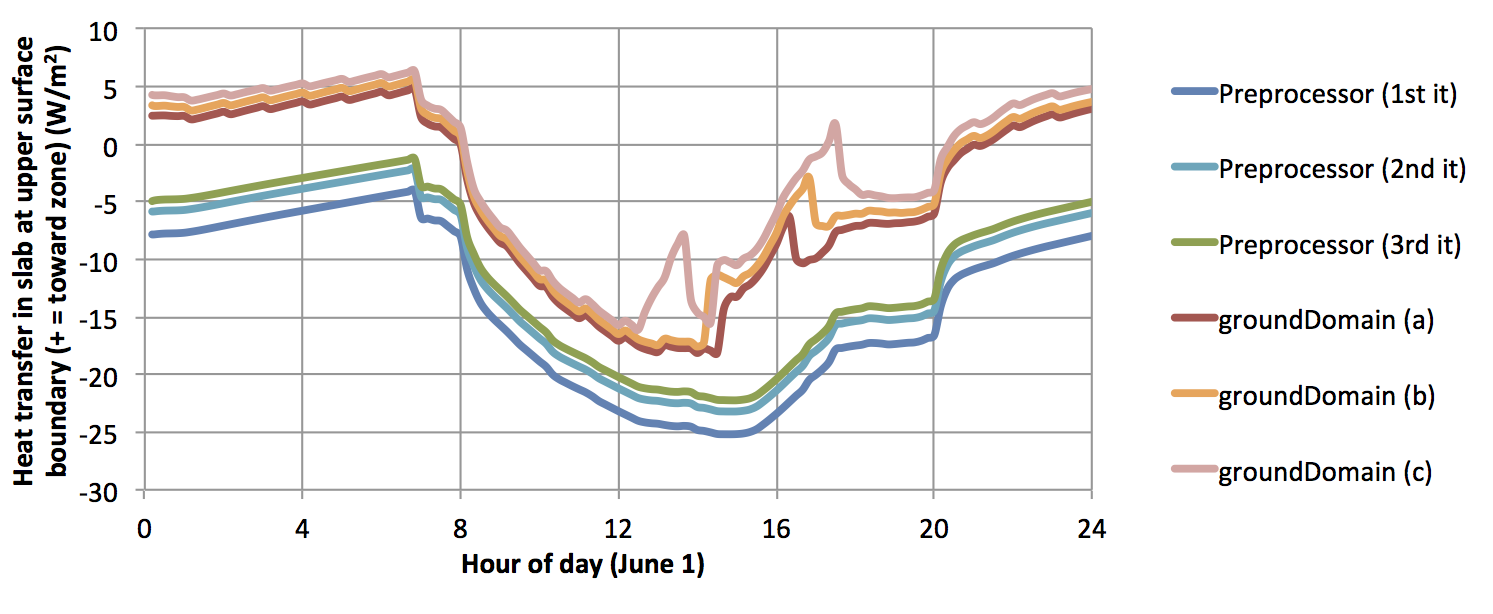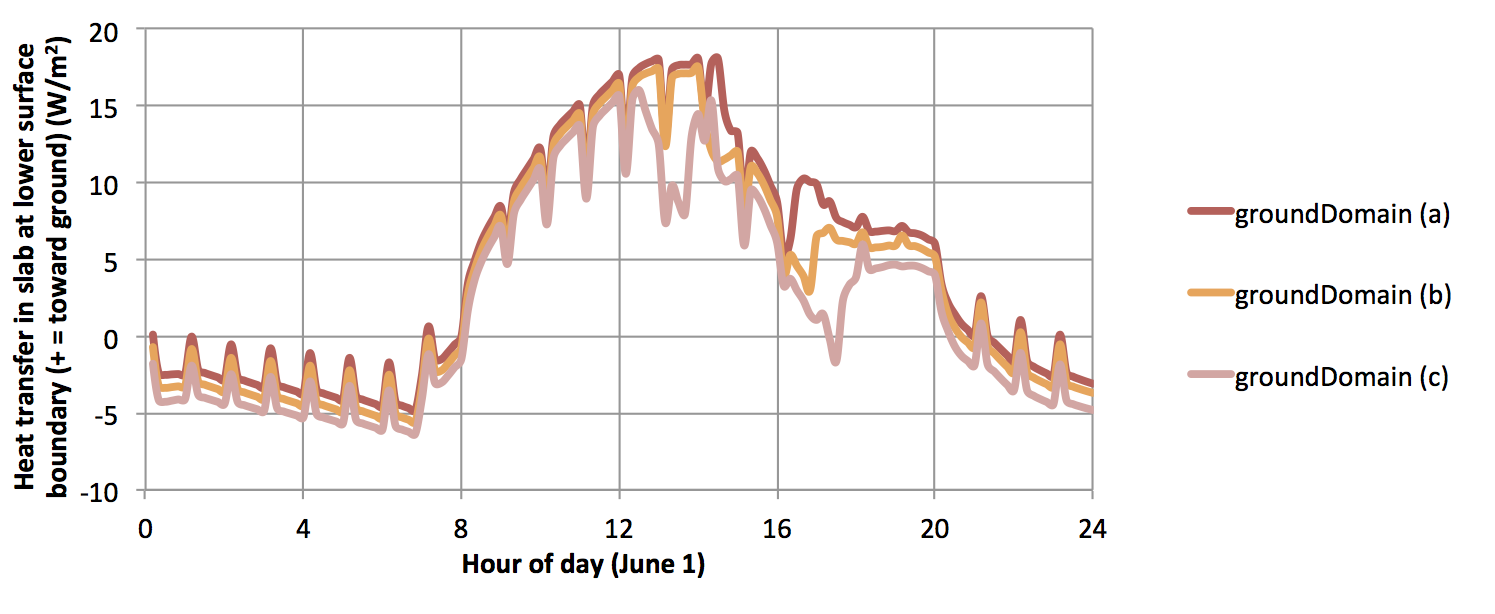The two ground heat transfer models in EnergyPlus
This is a modified version of the same basic question posted on EnergyPlus Support Yahoo! Group
I'm wondering about the two methods for simulating ground coupling in EnergyPlus. The first is the Slab or Basement preprocessor, now available through the GroundHeatTransfer:Slab and GroundHeatTransfer:Basement objects. The other is by means of the Site:GroundDomain:Slaband Site:GroundDomain:Basement objects. The former ("preprocessor") has been available with EnergyPlus for a long time, while the latter ("groundDomain") was added recently in 8.2 and 8.3
From here the newer inclusion appears to be the work of a group from Oklahoma State. It was described in another post as "improved" and "great," but I can't find any real comparison of the two models. The reference for the groundDomain is half a century old (I have a copy, it has hand drawn integral symbols!). The I/O and Engineering References both treat each model independently, without reference to the other, as if there weren't a different model implemented elsewhere.
The groundDomain model is much more convenient (since it doesn't require an initial run to estimate monthly room air temperatures) and I would love to use it. But is there a recent peer-reviewed reference for it, or validation data? People I know who have used EnergyPlus for a long time tend to prefer the preprocessor and distrust the groundDomain approach (which is said to give much faster ground temperature swings), but it's hard to know if this is justified skepticism or just workflow habit. I am working with small, naturally ventilated buildings with uninsulated slabs in warm climates where ground temperature can be quite important.
I'm also wondering why, if the groundDomain model is better, the EnergyPlus development team has spent resources on the last two release cycles improving the workflow of the preprocessor method? Does anyone know what the thinking here is/was?
Thanks for any thoughts and insight people have.


